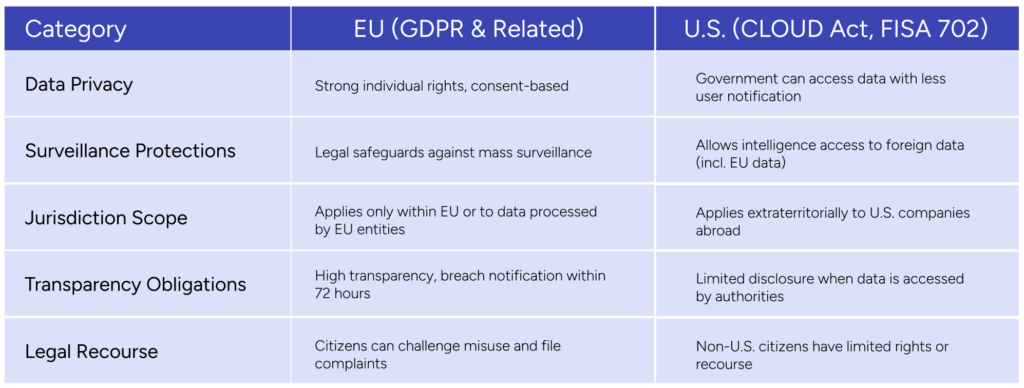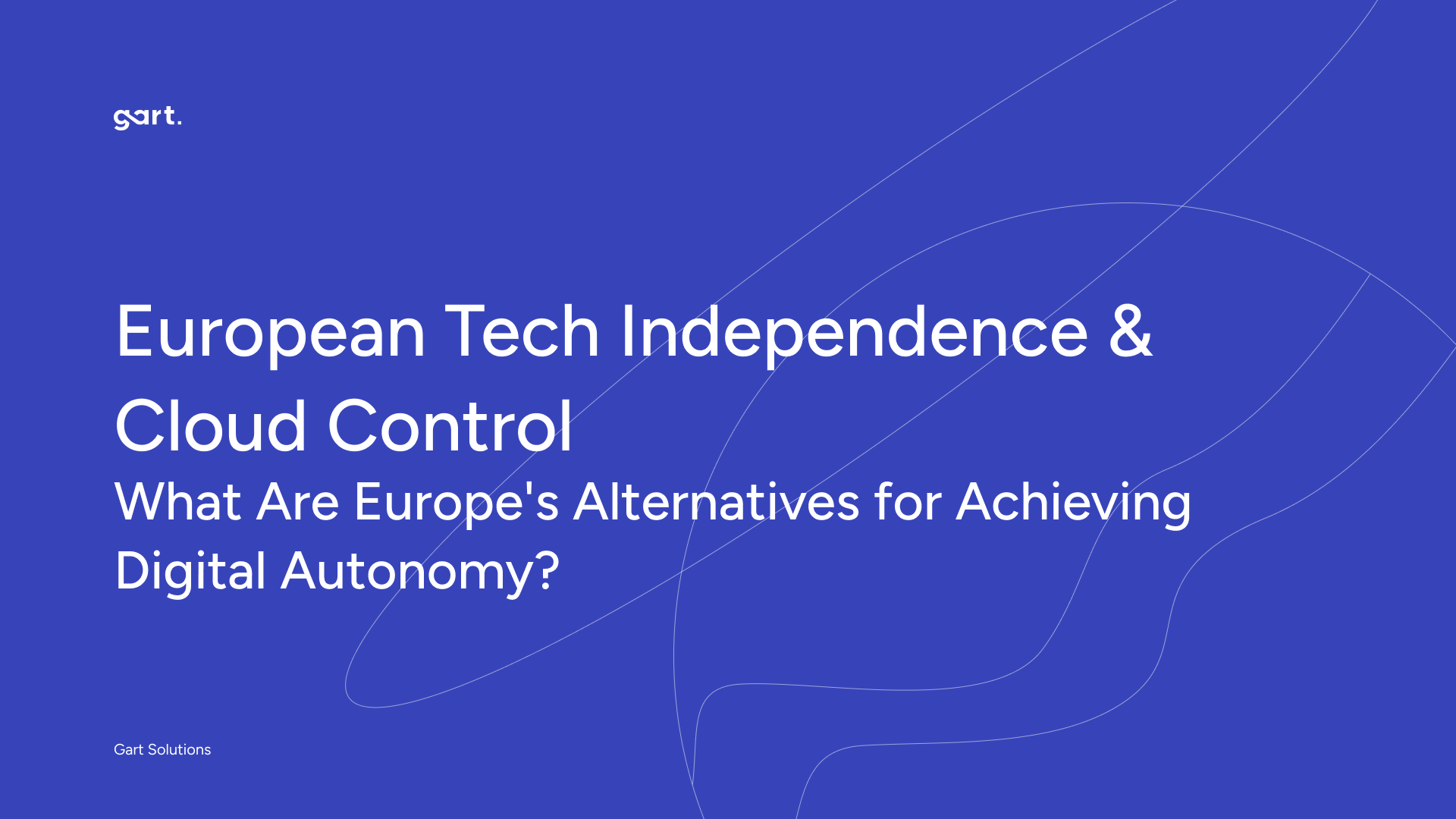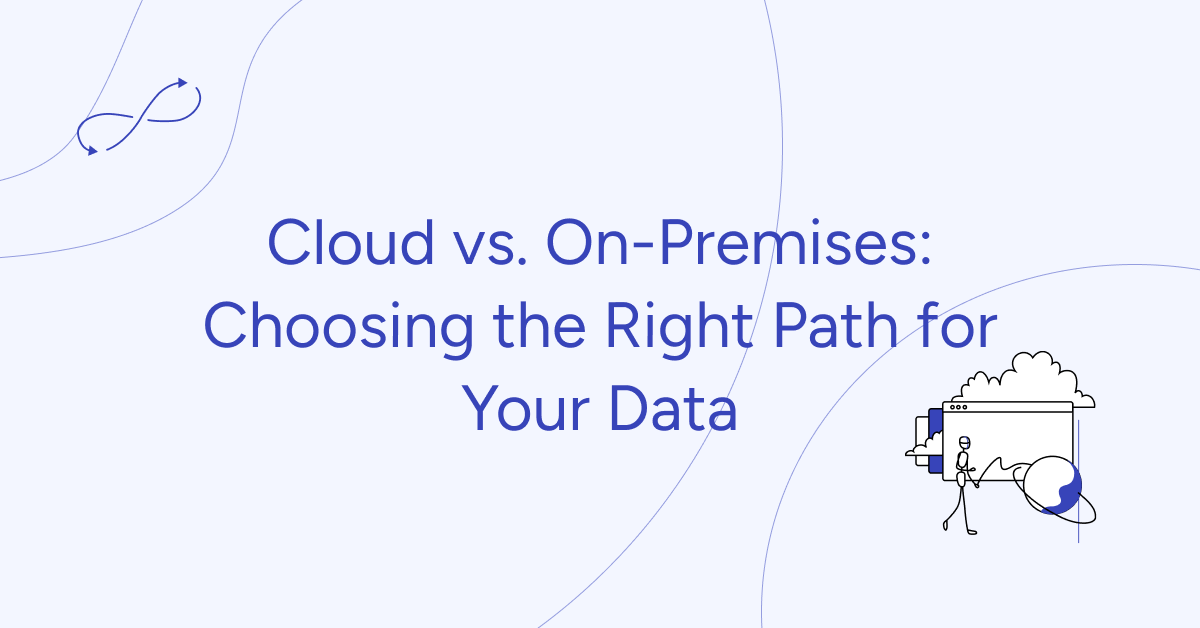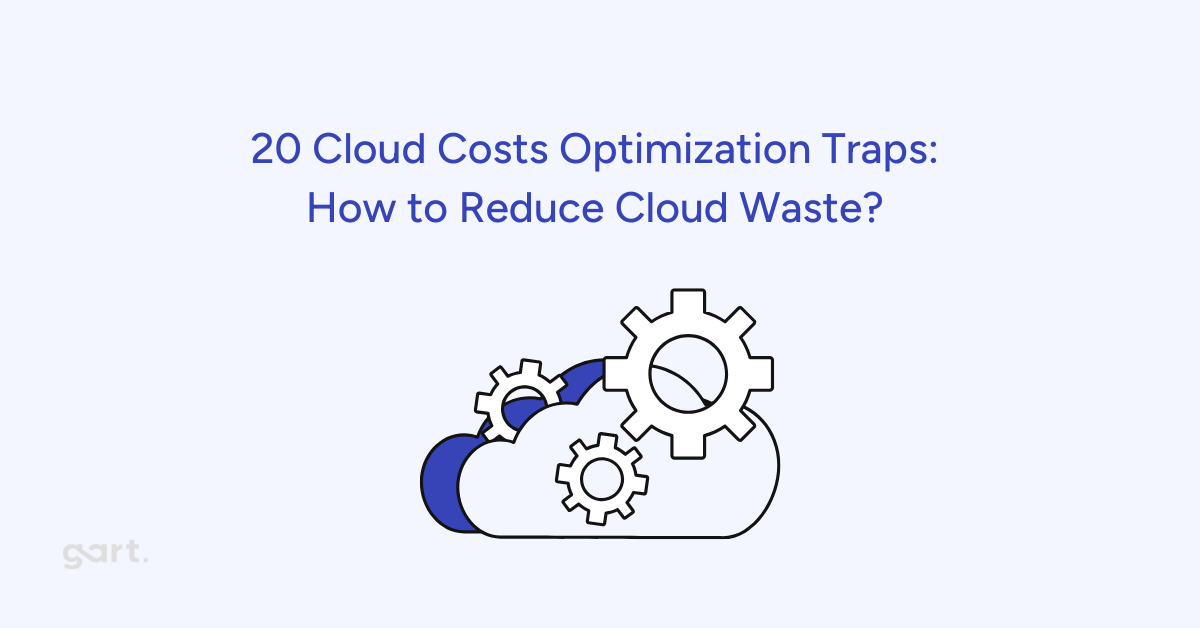Data is power. But in Europe, much of that power is still in foreign hands.
Despite Europe’s strong regulations and fast-growing tech sector, the continent remains heavily dependent on cloud services from American companies like Amazon, Microsoft, and Google.
While American these tech giants dominate the cloud computing landscape, European leaders are asking a crucial question: How can Europe achieve true digital independence without sacrificing innovation and economic growth?
Can Europe really call itself digitally sovereign?
Why Digital Sovereignty Matters
Digital sovereignty means having control over your digital infrastructure — including where your data is stored, how it is protected, and who can access it. It’s not about isolation. It’s about resilience, freedom of choice, and protection from external risks.
Today, the situation looks troubling:
- 92% of Western data is hosted in the U.S.
- 80% of global cloud data is controlled by just five non-European companies
- Microsoft and Amazon alone control 38% of the European cloud market
That means that even if your data is physically stored in Europe, it may still be under the legal reach of U.S. authorities — thanks to laws like the CLOUD Act and FISA 702, which allow American surveillance of data stored abroad by U.S. companies.

The problem goes beyond simple market competition. When critical data and digital infrastructure rely on foreign-controlled systems, Europe loses control over its digital destiny. Sensitive government information, business data, and personal information of European citizens flow through systems governed by foreign laws and policies.
Digital sovereignty isn’t just about nationalism – it’s about practical control and security. When a European hospital’s patient records are stored on American servers, or when a government’s classified information passes through foreign-controlled networks, real questions arise about privacy, security, and independence.
The EU’s digital sovereignty agenda aims to reduce reliance on foreign technology, enhance infrastructure, and address privacy concerns while facing challenges from U.S. and Chinese dominance. This isn’t about shutting out the world, but about having genuine alternatives and maintaining strategic autonomy.
“Europe missed the first wave of the cloud. If we miss the second one, we’ll be stuck in digital dependency.”
– Thierry Breton, EU Commissioner for the Internal Market
Real Risks from Real Cases
This isn’t just a theoretical concern. Several well-known cases have exposed how foreign control over cloud infrastructure can impact European users:
- The Microsoft Ireland case: U.S. officials requested access to emails stored on Irish servers. This raised alarm about how far U.S. legal power can reach.
- The Privacy Shield collapse: An EU-U.S. data-sharing deal was invalidated because U.S. surveillance conflicted with European privacy laws.
- Dutch government disruption: U.S. sanctions led to service interruptions in Europe, affecting even innocent bystanders.
These examples prove that relying on non-EU cloud providers exposes Europe to legal uncertainty, geopolitical risks, and potential data misuse.
The AI Factor: More Data, More Dependency
The rise of AI adds another layer of urgency. Modern AI systems need huge amounts of computing power, which is mostly available through major cloud platforms. But if European AI models are trained or hosted on non-EU infrastructure, it creates legal and ethical conflicts, especially with the new EU AI Act.
Hosting AI in the wrong cloud can violate EU data protection rules — even if developers follow best practices. That’s why digital sovereignty is not just a legal issue anymore. It’s becoming a strategic priority.
European Alternatives Taking Shape
Europe has started several initiatives to build its own cloud capacity. Some key projects include:

Slow adoption, lack of traction, and the gap between European ambitions and current reality.
1. Gaia-X: The Ambitious (But Struggling) Vision
“Europe contributes nearly 25% of global cloud revenues but owns less than 2% of cloud infrastructure.”
– Gaia-X
Gaia-X was Europe’s flagship attempt at creating a federated cloud infrastructure. Launched with great fanfare, it promised to be “a federated European cloud platform big enough to challenge the market dominance of the US hyperscale providers and meet the data sovereignty needs of businesses”.
However, the project has faced significant challenges. Critics argue that by including major American tech companies in the initiative, Gaia-X risks becoming what some call “a trojan horse for Big Tech in Europe”. Six years after its launch, that promise of digital sovereignty “rings hollow”.
2. EuroStack: The New Hope
Learning from Gaia-X’s struggles, a new initiative called EuroStack is gaining momentum. The EuroStack is described as “the continent’s last chance for technological sovereignty in the era of AI”.
Unlike Gaia-X, EuroStack takes a more focused approach to building genuinely European alternatives. By 2025, EuroStack is expected to expand into AI regulation, blockchain identity, and provide businesses with sovereign cloud Europe solutions, AI governance frameworks, and open-source software alternatives to AWS and Azure.
3. AWS European Sovereign Cloud: A Compromise Solution
Even American companies are responding to European demands for sovereignty. AWS European Sovereign Cloud, launching in 2025, offers enhanced digital sovereignty for EU organisations. While this isn’t a European-owned solution, it represents an attempt to address sovereignty concerns within existing market structures.
4. The Cloud and AI Development Act
The European Commission is taking legislative action. In 2025, the Commission will propose the Cloud and AI Development Act, with the aim to at least triple the EU’s data centre capacity within the next 5 to 7 years and fully meet the needs of EU businesses and public administrations by 2035.
What Makes a Real European Alternative?
For Europe to achieve genuine digital autonomy, several key elements must be in place:
Local Ownership and Control: The infrastructure must be owned and operated by European entities, subject to European law and governance.
Open Standards: Unlike proprietary systems that create vendor lock-in, European alternatives should embrace open standards that promote competition and innovation.
Privacy by Design: European solutions must put privacy and data protection at their core, reflecting European values and legal requirements like GDPR.
Economic Viability: Alternatives must be competitive in terms of performance, reliability, and cost. Sovereignty without competitiveness is not sustainable.
Innovation Capacity: European solutions need to keep pace with technological advancement, particularly in areas like artificial intelligence and machine learning.
Are There Any European Cloud Alternatives?
Yes — and their number is growing. While they may not yet match AWS or Azure in size, they offer better compliance, lower legal risk, and strong alignment with European values.
Some examples include:
- OVHcloud (France) – A leader in sovereign and secure cloud infrastructure
- Hetzner (Germany) – Affordable, high-performance hosting with full EU compliance
- Elastx (Sweden) – Sustainable, Kubernetes-based cloud for developers
- Scaleway (France) – Eco-friendly provider with a wide range of cloud services
- STACKIT (Germany) – Designed for enterprise needs and full data control
- IONOS Cloud (Germany/UK) – Reliable infrastructure for EU-based clients
These providers prioritize GDPR compliance, data residency, and open-source standards — things global hyperscalers often struggle with.
Public vs. Local Cloud: What’s the Difference?
| Criteria | Public Hyperscalers (AWS, Azure, GCP) | EU-Based Providers (OVH, Hetzner, etc.) |
|---|---|---|
| Data Sovereignty | May store data worldwide | Hosted entirely in the EU |
| Legal Risk | Subject to U.S. laws | Governed by EU laws |
| Support | Global, but less localized | Local support, EU languages |
| Performance | Fast globally | Optimized for EU performance |
| Flexibility | Many services, but risk of lock-in | Cloud-agnostic, easier to migrate |
| Compliance | General certifications | Tailored to EU-specific regulations |
How to Build Cloud Independence
European companies and governments don’t have to “go it alone” or cut ties with global platforms. Instead, they can take a hybrid and strategic approach:
- Mix Providers: Use both global and local providers. Keep sensitive workloads in EU-based clouds.
- Classify Workloads: Not all data is equal. Critical or regulated data should always stay on sovereign infrastructure.
- Ensure Portability: Use open standards like containers and Infrastructure-as-Code (IaC) to avoid vendor lock-in.
- Audit Regularly: Know where your data lives, who controls it, and whether you can move it if needed.
What Comes Next?
Digital independence doesn’t happen overnight. It’s a journey — and Europe is now on the path. The key is not to reject collaboration with U.S. providers, but to make smarter choices:
✅ Choose partners that match your values
✅ Protect your data with the right legal frameworks
✅ Plan for long-term resilience, not just short-term convenience
As Margrethe Vestager, VP of the European Commission, put it: “Digital infrastructure is no longer just technical — it’s geopolitical.”
And as the experts at Gart Solutions say:
“Cloud independence isn’t about cutting ties. It’s about choosing your ties wisely.”
✅ Start with a Cloud Audit
You can’t manage what you don’t measure.
Ask yourself:
- Where is your data stored?
- Which jurisdictions govern it?
- Are you prepared to switch providers if needed?
A simple cloud audit will reveal your current risks and help you make smarter, future-proof decisions.
👉 Need help getting started? Contact us for guidance on building your path to cloud independence.
Conclusion
The future of European cloud is not just about technology. It’s about trust, freedom, and control. By investing in sovereign solutions and rethinking cloud strategies, Europe can finally take back ownership of its digital destiny.
See how we can help to overcome your challenges









